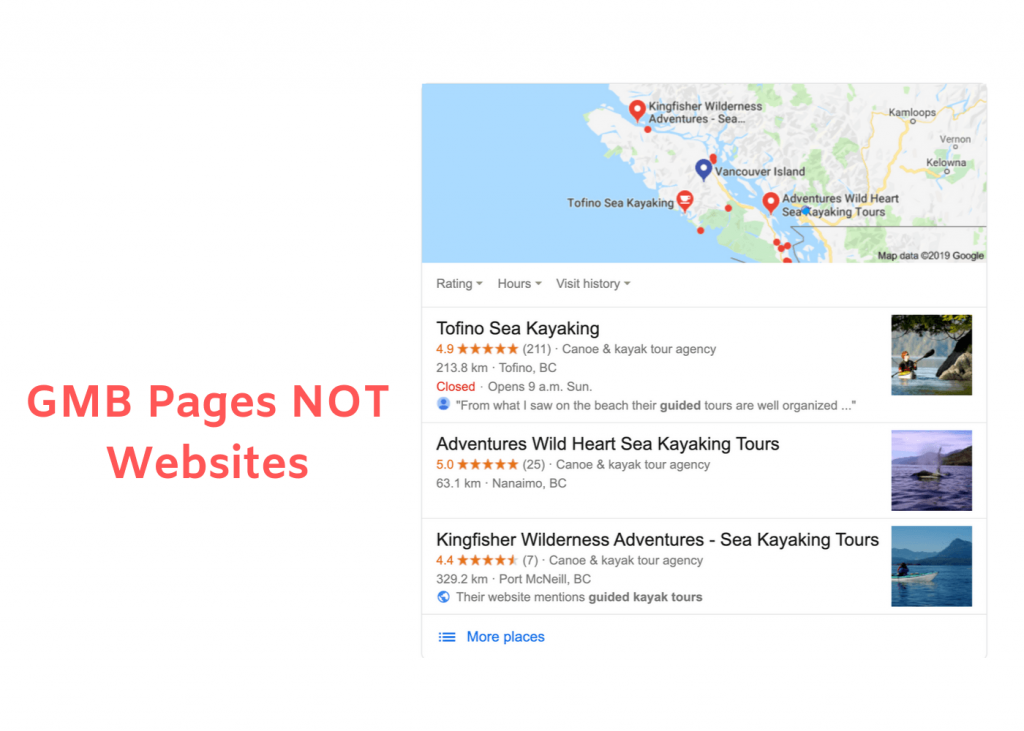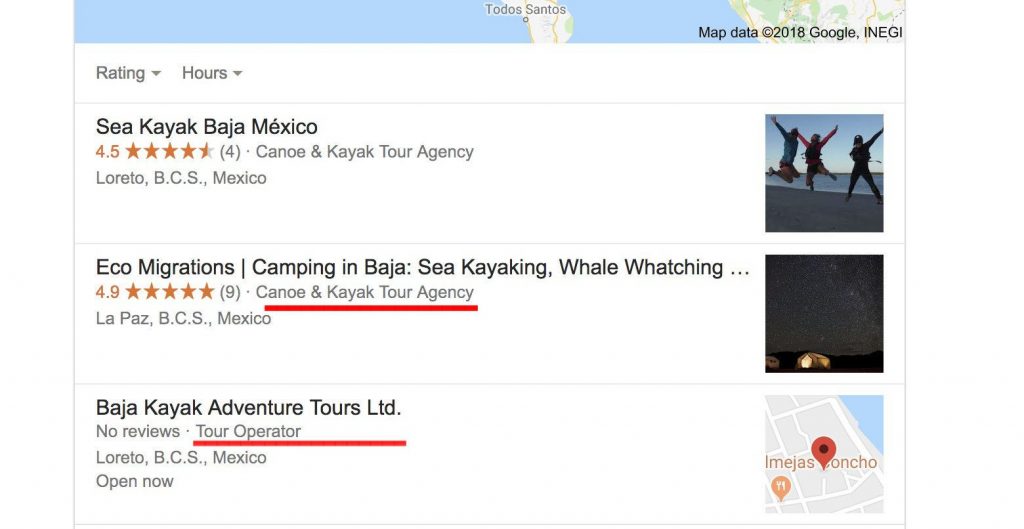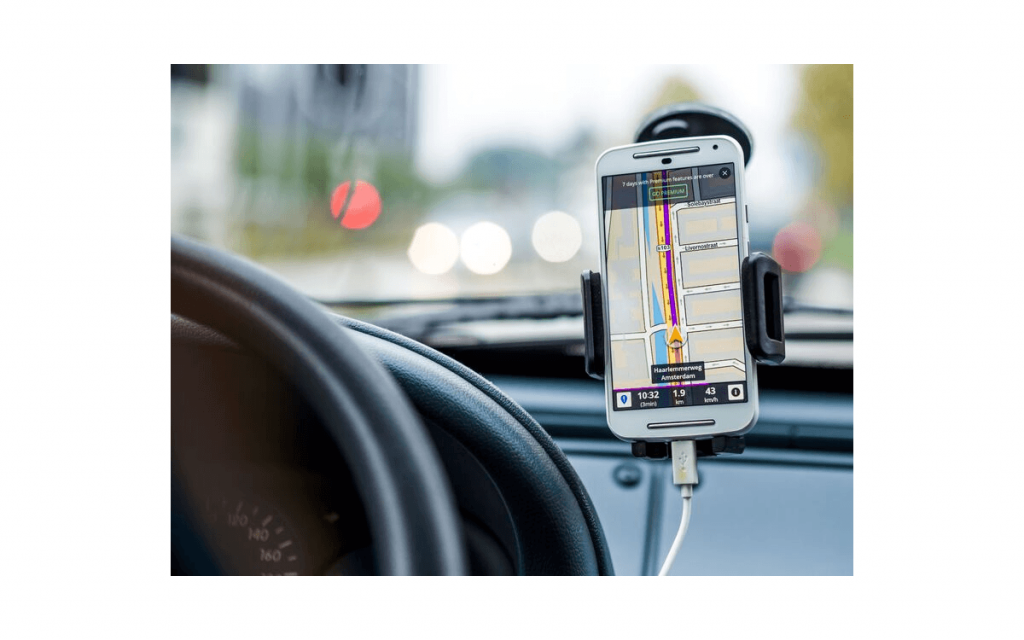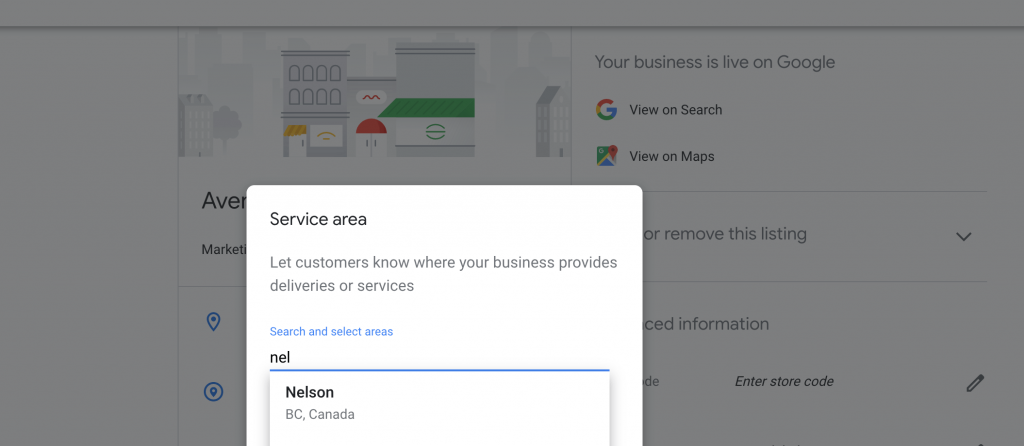Maybe you’ve heard of Google My Business. Maybe you even set up a Google My Business (GMB) page a while ago and figured it was doing what it should. Maybe someone in your organization, or even a customer, created your page. Or maybe you’re thinking, “I don’t need to bother with this.”
I’d like to show you why you might consider taking a good look at creating or optimizing your GMB page.
A Brief of History of GMB
What originally started as Google Places, then Google + Local, is now Google My Business. GMB is a free tool that lets you manage how your business appears on Google Search and Maps. From company details to photos and videos to customer reviews, GMB lets you present your business strategically in local searches. With each iteration of this platform, powerful new features have been added, and Google has made GMB a priority. When Google thinks something is important enough to possibly begin charging for it, we business owners should probably take note.
Getting in the 3-Pack
When you do a Google search, you typically get three top results: organic, paid and local. Organic results are what Google deems most relevant to a searcher’s query. Paid results are ads and sponsored posts that come up. Local results are the GMB pages that are accurate, relevant and geographically close to the searcher. To illustrate how this works, I’ll search for ‘guided sea kayaking Vancouver Island’ from my location in Vancouver. Here’s what I get:

What’s key here is the GMB window displaying those top three results. Those are GMB pages, not websites. Digging a little deeper the ‘best match’ category shows that many geographically distant businesses come up higher than closer ones — because those distant businesses optimized their GMB pages.
One tour operator close to my home came up in 25th position, behind many more distant operators, despite having a solid website that should be giving them decent SEO. Why? Because their GMB page was unclaimed.
So what does all this mean?
If you’re a tour operator in a competitive market, it’s far easier to get into that GMB 3-pack than to win at organic SEO (search engine optimization) or PPC (pay-per-click). Inbound, overseas travel agencies with large marketing budgets will take the top organic and paid slots, but they cannot compete in the GMB 3-Pack because they’re not local.
Claim Your GMB Page
So, where to begin? Start here and see what Google has on file. If you’ve claimed your GMB page, Google will offer you some suggestions for improvements. If not, get cracking and claim it.
Do a search to check for any duplicate GMB pages that may be out there. A past employee or even a customer might have set them up. Try searching for variations of your business name, any older names you’ve used, and include your city in the search.
When it comes to GMB listings, more is not better. You want all your reviews (which we’ll get to in a minute) in one place. You also want your GMB page to compete against your competitors’ GMB pages, not your own. And, of course, it’s smart to stay in Google’s good graces.
Get Your Details Right
Depending on the business category you select and your location, you may be given different options for populating your listing. I’ll try to cover the most important stuff for most tourism businesses.
Try to pick the best category option Google gives you. Think of it from your potential customer’s point of view. What would a searcher find more helpful, ‘Tour Operator’ or ‘Canoe and Kayak Tour Agency?’

Can’t find your category?
For, say, the heliski operators out there, things get trickier because Google doesn’t offer a ‘heliski’ category. A quick scan of a dozen or so heliski listings shows categories such as ‘lodge,’ ‘3-star hotel,’ ‘ski resort,’ and just ‘resort.’ But now, GMB allows multiple categories, so if yours isn’t available, pick the closest match as your main category and then a second category. For example, a combo of ‘lodge’ and ‘ski resort’ could work for a heliski operation, along with the right keywords for your Info section.
What if you’re a luxury eco-resort or ski lodge? For accommodation listings, the GMB default is “3-star hotel” (they obviously don’t want just any lodge calling themselves 5-star). That’s a bummer if you actually are a 5-star lodge charging 5-star prices. Here’s what you can do: Google looks at external sources, such as media or industry listings to verify a hotel with more than three stars. So gather up a few 5-star listings in other places then make a formal application to GMB to have your lodging star rating bumped up.
Tell Your Story
When it comes to your Info section, be sure to include a detailed description of your service offerings. Ideally you’ve already spent time figuring out your digital marketing strategy, ideal customers and value proposition. Your description should be enticing and authentic to your target audience but don’t stuff your listing with keywords — you may risk getting it suspended.
Google Maps
GMB once gave users two options for using Google Maps: ‘“I serve customers at my store” or “I deliver goods and services.” So if you were a brick-and-mortar business like a coffee shop, you could put in your address in and you’d be fine. If you were a roofer, you might hide your address and select a ‘service area’ in a radius around your location — 10 miles, 20 kilometers, etc.

This worked well for cafés and roofing businesses but proved to be a pain for many remote tourism businesses that had, for example, an office in a town and a lodge or meet spot in the mountains. Customers would enter a business name into their smartphones, follow directions to to the head office and miss their trip altogether.
This year, GMB finally addressed this issue.
Now if you’re a remote tour operator, you can enter your business address, keep it hidden, and enter a different service location anywhere you actually operate, without requiring a radius around your actual address. Be sure to include a link to directions in your Info section.
A legitimate GMB address is one that can receive snail mail. I’ve seen businesses use fake addresses that help them show up in the right spot on Maps, when their actual mailing address is in a city 100 kilometers away. Don’t be tempted. If your listing gets flagged or suspended by Google you’ll get a notice that you need to re-verify your GMB page. Google’s preferred verification method is to send a postcard to your address on file. If you’re using a false address you won’t get your GMB account back.
Look Good with Great Visuals
GMB lets you upload a 30-second video to your page. Take advantage of this by creating a video that shows customers the great experiences they can expect. Photos of your business, staff, and equipment should also be included. (Note: customers can also upload videos and photos of their own).
Promote Your Tourism Business with Posts
If you’re running an event, GMB posts are a great place to promote it. Another use might be selling last minute spots on a trip or advertising a sale. Start with a strong visual, keep titles to 58 characters and copy to 200-300 characters and make sure to have a strong call to action. By default, posts are removed after 7 days to keep things fresh, with the exception of events, which are removed after the event takes place
Word On The Street
One of the most important features of GMB pages is reviews. Great reviews affect your spot in the 3-pack and can have a big impact on converting potential customers. It’s worth reaching out to your existing customer base to invite them to leave a review for you. Of course, turn on notifications and be prepared to respond promptly and appropriately to all reviews, especially any bad ones. If you use a review tool, I suggest having it set up and managed by an expert who is up to date on best practices and acceptable use.
Track Everything and See What’s Working
Insights is the analytics tool built into GMB pages that gives basic performance results for how your page is doing. It shows direct and discovery searches that come to your page, phone calls received, photo and video views, and driving directions requested on Google Maps. Download the app to manage your page from your mobile device so you can respond right away to reviews and inquiries, and check on all photos or videos uploaded by others. Finally, remember to check your listing often, since new functions are being added all the time.
